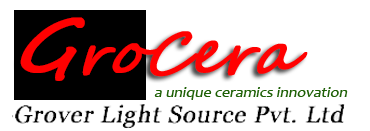I am text block. Click edit button to change this text. Lorem ipsum dolor sit amet, consectetur adipiscing elit. Ut elit tellus, luctus nec ullamcorper mattis, pulvinar dapibus leo.
ZTA (Zirconia Toughened Alumina)
The main advantage of Zirconia Toughened Alumina (ZTA) is the additional strength and toughness over alumina with a lower cost than zirconia (YTZP, MSZ, CSZ).
The combination of aluminum oxide and 10-20% zirconium oxide provides a much higher strength, toughness, hardness and wear resistance than alumina alone.
The 20-30% increase in strength often provides the design criteria needed at a much lower cost than using zirconia.
A process called transformation toughening is the phenomenon that increases the fracture toughness of ZTA. When placed under stress, the zirconia particles change their crystal structure from a tetragonal to a monoclinic structure, causing a volume expansion that compresses the surrounding crack in the alumina matrix.
ZTA should be considered for any application where structural strength is needed that exceeds the standard alumina properties.
| Prime Features | |
| Higher strength than alumina | Lower cost than zirconia |
| High corrosion resistance | High erosion resistance |
| High fracture toughness | Capable of a very fine surface finish |
| Typical Applications | |
| Standoffs | Pump piston sleeves |
| Insulators | Instrument |
| Probe bodies | Sensor bulbs |
| Pump components | Valve seals |
| Bushings | Impellers |
| Fluid delivery system components | Analytical instrument columns |
| Application Limitations | |
| ZTA does provide a higher strength than alumina but the temperature limitation of 1500 C (2732 F) must be observed. Above this temperature the strength contribution of the zirconia is reduced. | Use in moist environments at temperatures above 250C also must be carefully considered as the zirconia is subject to low temperature degradation. |
